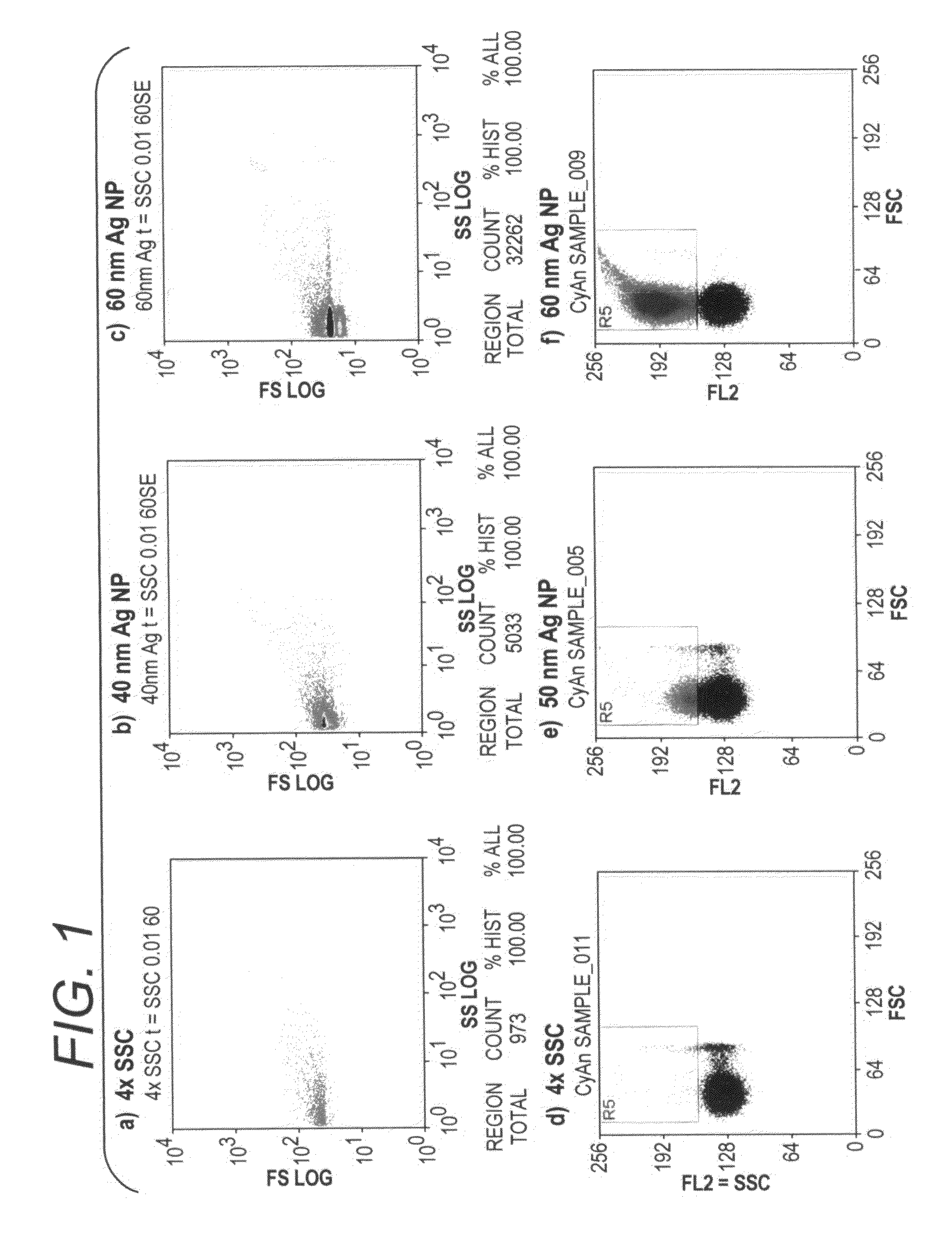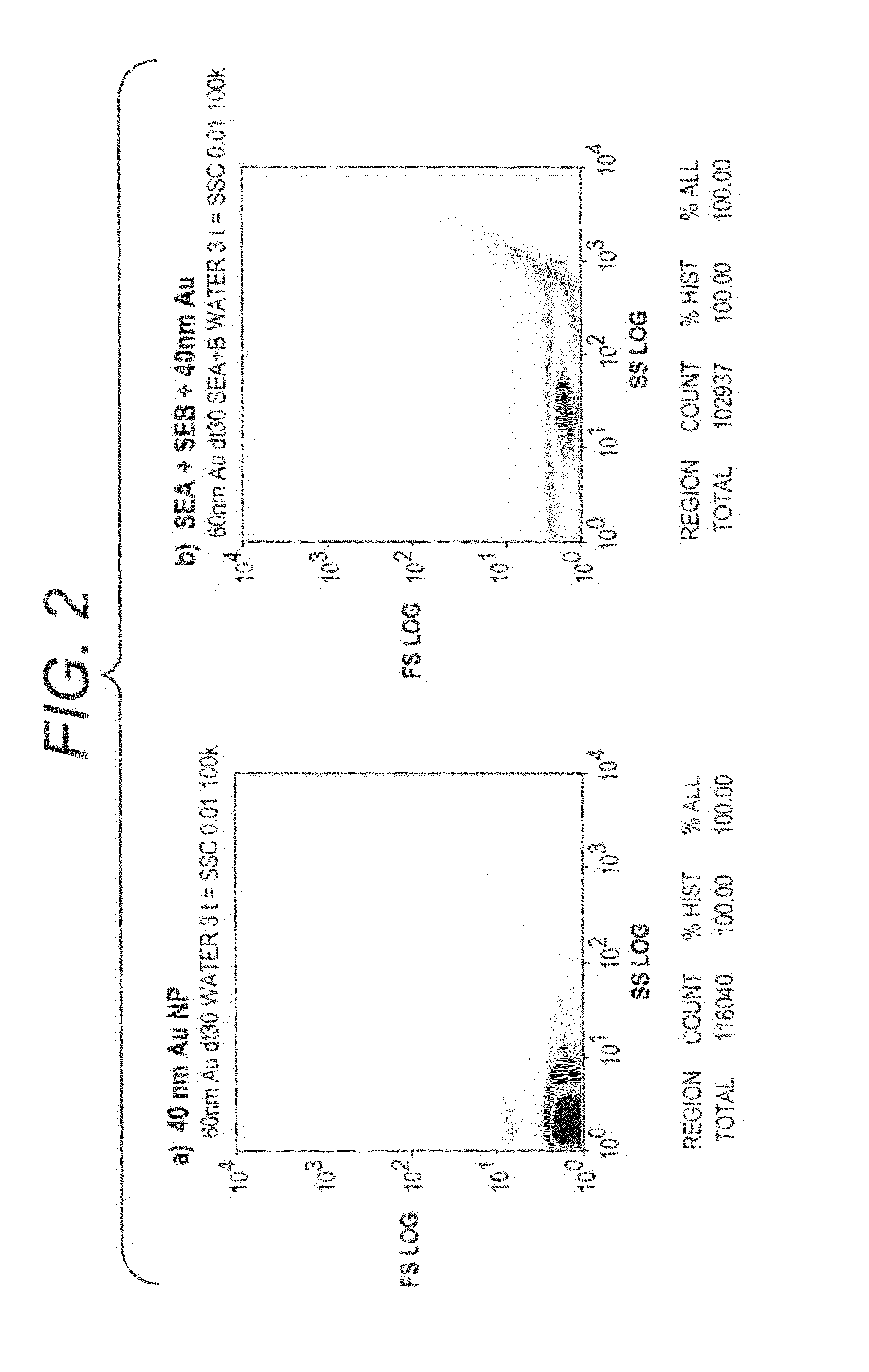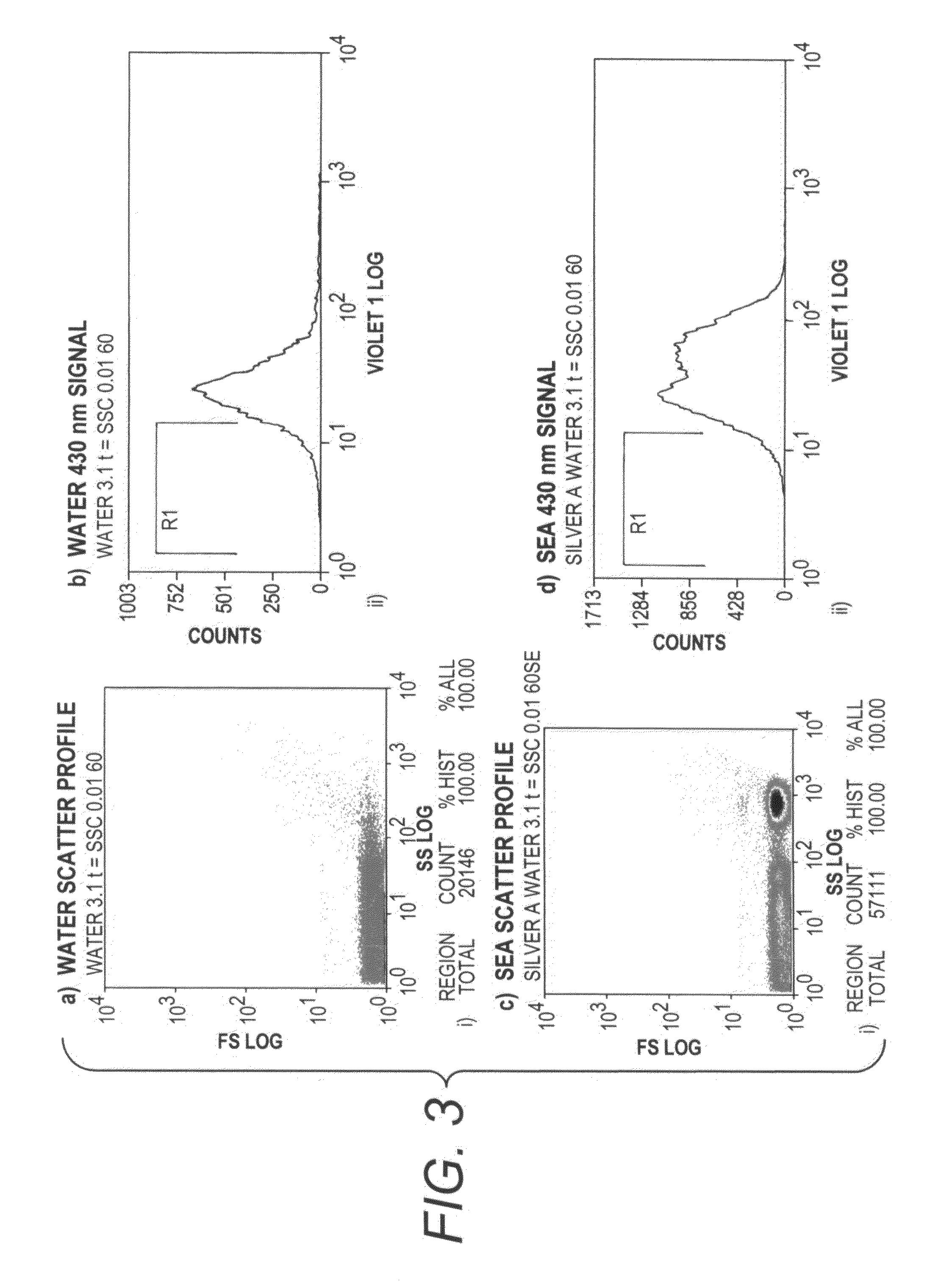Ultra-sensitive detection of analytes
a technology of analytes and sensitive detection, applied in the field of screening methods, can solve the problems of increasing assay time, difficult, expensive, time-consuming, etc., and achieve the effect of expanding the flexibility, adaptability and usefulness of techniques, and facilitating detection
- Summary
- Abstract
- Description
- Claims
- Application Information
AI Technical Summary
Benefits of technology
Problems solved by technology
Method used
Image
Examples
example 1
Scatter Light Generated by Gold and Silver Nanoparticles in Flow Cytometry Assays
[0104]Gold and silver nanoparticles of various sizes were used to demonstrate the capability of nanoparticles to be used in flow cytometry assays. Using a Dako CytoMation 405 nm laser (Dako Denmark A / S, Glostrup, Denmark) or the Dako MoFlo 530 nm laser, forward and side scatter was adjusted to detect sub-micron particles. Gold and silver nanoparticles were obtained from BBInternational Ltd., Cardiff, UK. To demonstrate scatter light from 40 nm and 60 nm particles, 106 Ag nanoparticles in 500 uL 4×SSC (Saline Sodium Citrate) were measured by side scatter in a 60 sec analysis (FIG. 1b-c), and 106 Au nanoparticles in 500 uL 4×SSC were detected based on their red signal in a 60 second run (FIG. 1e-f), and were compared to measurement of 4×SSC alone (FIGS. 1a and 1d).
[0105]Nanoparticles of both types and sizes produced a bright and tight population, and larger nanoparticles produced more scatter. Aggregated ...
example 2
Silver Amplification Induces Broad Side Scatter Shift of Gold Nanoparticles
[0107]As shown in FIG. 2, silver staining of gold nanoparticles causes a large shift in side scatter and forward scatter, indicating a significant change in particle size and scatter properties. The experiments were conducted using 2 uL 40 nm gold nanoparticles were mixed with silver solution (2 uL Signal Enhancement A (SEA; Nanosphere, Northbrook, Ill.) and 2 uL Signal Enhancement B (SEB; These solutions are commercially available from Nanosphere, Northbrook, Ill. There are functionally equivalent commercially available Silver Enhancement reagents available (e.g. Silver Enhancement Solution A, #S-5020 and Silver Enhancement Solution B, #S-5145 Sigma-Aldrich, St. Louis, Mo.) and reacted for 5 minutes at room temperature. The reaction was stopped by diluting with 500 uL water. Scatter was detected with the CytoMation 405 nm laser. Silver-coating of gold nanoparticles caused a large shift in side scatter and a ...
example 3
Silver Particles in Solution Detectable by Flow Cytometry
[0108]As shown in FIG. 3, Plasmon scatter light from silver particles can be seen by flow cytometry. A 100 uL aliquot of signal enhancement solution A (SEA) was transferred to a clear 1.5 mL tube. Due to opening of the box it was stored in, the SEA was briefly and randomly exposed to ambient light. Using the CytoMation 405 nm laser and 430 nm filter, silver particles induced by exposure to light were detected by side scatter (FIG. 3c). An increased 430 nm signal was also detected (FIG. 3d), indicating the plasmon scatter light from silver particles can be seen by flow cytometry.
PUM
| Property | Measurement | Unit |
|---|---|---|
| Diameter | aaaaa | aaaaa |
| Nanoscale particle size | aaaaa | aaaaa |
| Concentration | aaaaa | aaaaa |
Abstract
Description
Claims
Application Information
 Login to View More
Login to View More - R&D
- Intellectual Property
- Life Sciences
- Materials
- Tech Scout
- Unparalleled Data Quality
- Higher Quality Content
- 60% Fewer Hallucinations
Browse by: Latest US Patents, China's latest patents, Technical Efficacy Thesaurus, Application Domain, Technology Topic, Popular Technical Reports.
© 2025 PatSnap. All rights reserved.Legal|Privacy policy|Modern Slavery Act Transparency Statement|Sitemap|About US| Contact US: help@patsnap.com



